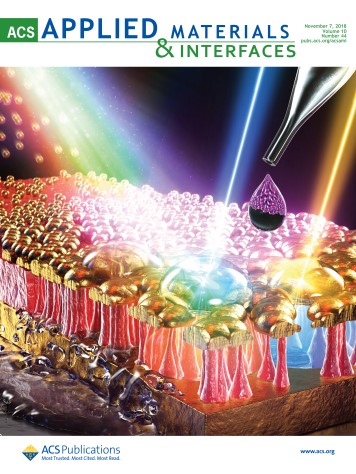loaction
SNU Professor Sin-Doo Lee Develops Highly-sensitive Sensors which Detects Miniscule Amounts of Transparent Fluid in the Visible Range
-
작성자
관리자
-
등록일
2018.12.12
-
조회수
791
SNU Professor Sin-Doo Lee Develops Highly-sensitive Sensors which Detects Miniscule Amounts of Transparent Fluid in the Visible Range
- Published on the cover of ACS Applied Materials and Interfaces
- ▲SNU Department of Electrical and Computer Engineering Professor Sin-Doo Lee (KIST) Senior Researcher Dr. Yong-Sang Ryu, PhD Candidate Eui-Sang Yu
Korean researchers have developed the world's first technology which allows the detection of small amounts of transparent fluid through the naked eye.
SNU College of Engineering announced on the 12th Nov. 2018 that Department of Electrical and Computer Engineering, Professor Sin-Doo Lee (co-corresponding author), Korea Institute of Science and Technology (KIST) Senior Researcher Yong-Sang Ryu, PhD, (co-corresponding author), and PhD candidate Eui-Sang Yu (first author; SNU-KIST Joint Student) have developed a technique to detect minute amounts of transparent liquids in the visible range through the an optical metal-insulator-metal (MIM) resonator of nanoscale thickness.
This study opens up the possibility to detect medium with a color in visible ranges without aids of huge and expensive optical measurements, also can be used for sensing application of hazardous materials. Moreover, it showed a message incode/decode as plausible optical storage information devices by filling in the liquid or gas that penetrates the insulator films.
The team proposed a structure in which the dielectric material layer forms a nanometer level space permitting either liquid or gas to infiltrate into the optical MIM resonator of insulating layer. The team introduced the simple and cost-effective methods to reconstruct the nanospace of the dielectric material layer with air vacancy, whose volume is adjusted as desired by single plasma reactive ion etching (RIE) process.
The liquid or gas introduced into the new optical resonator can vary the resonance wavelength in the visible range by changing the effective refractive index of dielectric layer, resulting in color changes. As a result, the team constructed a color conversion value that is conceivable by the naked eye. The results of this study are expected to have a significant impact on the development of highly sensitive, low-cost, light-weight, and small-sized sensors in the areas of public health and environment.
"This research has developed a technique to visualize various changes in liquid or gas, moisture, temperature, etc.," Dr. Ryu has stated. "In the future, we hope that this technique will be further developed to act as a sensor for various substances hazardous to the environment and health."
The study was selected as the cover paper by the ACS Applied Materials and Interfaces on the November 7 issue. This study was carried out with the support of the KIST institutional business division, industry division and the SNU BK21 project.
[References]
ACS Applied Materials and Interfaces: https://pubs.acs.org/doi/10.1021/acsami.8b12553

▲ ACS Applied Materials and Interfaces Journal Cover

▲ Illustrations of liquid-permeable MIM Structure